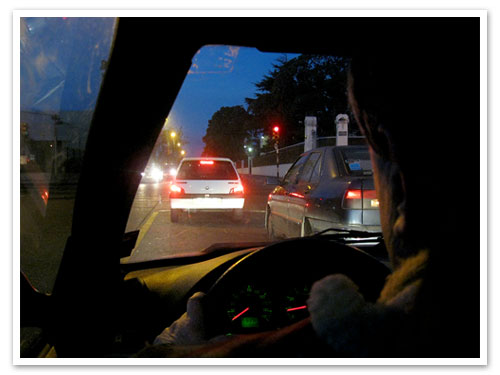
Spring is right around the corner. Soon, the bare trees and brown lawns will be green again, and the days will get longer. In the spring, we "spring forward" by starting daylight savings time. This year, on Sunday, March 8th, the clocks will be turned forward one hour at 2:00 am to 3:00 am. You’ll probably hear people grumble about "losing" an hour of sleep, and with good reason. Not only does losing an hour make people more irritable, it can also be dangerous, especially when it comes to those who have to commute to work the next day.
Daylight savings time was first suggested back in 1895, but here in the US, it didn’t really start until 1966. While most of Europe and North America observes daylight savings time, the majority of the world doesn’t. Areas near the equator, as well as most of Africa and Asia, for example, don’t observe daylight savings time.
Daylight savings time has had its fair share of controversy. When daylight savings time starts each year in March, hospitals report a 24% spike in heart-attack visits throughout the US. The problem seems to stem from a change in our sleep schedules. When we spring forward an hour, we lose about 40 minutes of sleep. It can take weeks for our bodies to get used to the change.
Sleep-deprived drivers are dangerous drivers. According to the National Highway Traffic Safety Administration, drowsy driving claimed 795 lives in 2017, and caused many collisions.
We want to help you get ready for the time change, so we put together a list of ways you can adjust your driving to make daylight savings time a little safer for yourself and those around you.
1. Look up when the sun will rise and set.

Sunrise and sunset will be about an hour later on March 8th than it was the day before. If you’re used to your morning commute being sunny, it can be jarring for it to suddenly be dark. Make sure you pay attention to when the sun will rise after the time change, and adjust your driving accordingly. If it’s darker than you’re used to when you leave in the morning, remember to make sure your headlights are on and working, and keep an extra sharp eye out for hazards.
2. Adjust your sleep schedule.

Sleep is one of the most important factors when it comes to our health. "Losing" an hour of sleep with the time change can really mess up your body. Go to bed a bit earlier leading up to daylight savings time in order to give your body some more time to adjust. Remember, drowsy driving is incredibly dangerous.
3. Drive defensively.
Defensive driving is always important. It’s especially important during daylight savings time when other drivers are affected by the time change as well. Do not drive distracted, avoid sudden lane changes and tailgating, and remember to always use your turn signals. Other drivers may not be as alert as you are, so it’s vital that you give your full attention to the road and do not engage in any risky driving behaviors. If your defensive driving skills are a little rusty, check out our website! We offer online defensive driving courses in many states.
4. Give yourself plenty of time to get to your destination.

With everyone being a little off with the time change, you may need a little bit more time to get to your destination. If you plan for it, you’ll be ready! Leave a little earlier than you normally would, and keep in mind that other drivers are probably disoriented by the time change, too. And remember to wear your seat belt!
While daylight savings time does come with some risks on the road, as you can see, there are precautions we can take to make sure we’re as safe as possible following the time change. We hope these tips help you stay alert! If you’d like to learn more about traffic safety, and see which online courses we offer in your state, check out our website!
Spring is right around the corner. Soon, the bare trees and brown lawns will be green again, and the days will get longer. In the spring, we "spring forward" by starting daylight savings time. This year, on Sunday, March 8th, the clocks will be turned forward one hour at 2:00 am to 3:00 am. You’ll probably hear people grumble about "losing" an hour of sleep, and with good reason. Not only does losing an hour make people more irritable, it can also be dangerous, especially when it comes to those who have to commute to work the next day.